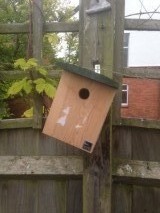A few things:
 I enjoyed being at the Norfolk Bird Fair on Saturday. I gave a talk about Passenger Pigeons and Hen Harriers to c70 people and I thought it went well. I sold a few books, had a few chats, met a few friends and saw a Hobby overhead – did anyone else see it (no-one seemed to be looking)? And, the choice of food was good too. This was just the second year of this event at Mannington Hall and I had a few words with its owner, Lord Walpole, who has questioned me when, in a previous life, I have given evidence to House of Lords Select Committees.
I enjoyed being at the Norfolk Bird Fair on Saturday. I gave a talk about Passenger Pigeons and Hen Harriers to c70 people and I thought it went well. I sold a few books, had a few chats, met a few friends and saw a Hobby overhead – did anyone else see it (no-one seemed to be looking)? And, the choice of food was good too. This was just the second year of this event at Mannington Hall and I had a few words with its owner, Lord Walpole, who has questioned me when, in a previous life, I have given evidence to House of Lords Select Committees.
 I cut the ‘lawn’ on Friday afternoon – even with a motor mower it was quite hard work as the lawnmower kept getting tired. The fact that the lawnmower kept having a ‘rest’ meant that I could look at nature. There were three frogs in the grass by the fence which made me leave a strip of uncut grass as I didn’t want squashed frog on my conscience. The female Blackbird without a tail kept going into the ivy – I really don’t know what’s happening there. I thought she had a nest, but now I’m not sure. A Holly Blue went past, and then an Orange Tip. The chimes of the ice-cream van attracted me outside for a £1 cornet. As I turned back to home I noticed a Sparrowhawk high above my house. Was she looking at the Blue Tits that were whizzing in and out of the nestbox? They are vicious predators – that’s the Blue Tits, of course! Taking hundreds of insects, some still alive, into the nestbox each day to feed to their young – nobody bothers because they never touch a Pheasant or Partridge so the likes of Robin Page don’t class them as predators.
I cut the ‘lawn’ on Friday afternoon – even with a motor mower it was quite hard work as the lawnmower kept getting tired. The fact that the lawnmower kept having a ‘rest’ meant that I could look at nature. There were three frogs in the grass by the fence which made me leave a strip of uncut grass as I didn’t want squashed frog on my conscience. The female Blackbird without a tail kept going into the ivy – I really don’t know what’s happening there. I thought she had a nest, but now I’m not sure. A Holly Blue went past, and then an Orange Tip. The chimes of the ice-cream van attracted me outside for a £1 cornet. As I turned back to home I noticed a Sparrowhawk high above my house. Was she looking at the Blue Tits that were whizzing in and out of the nestbox? They are vicious predators – that’s the Blue Tits, of course! Taking hundreds of insects, some still alive, into the nestbox each day to feed to their young – nobody bothers because they never touch a Pheasant or Partridge so the likes of Robin Page don’t class them as predators.
- The results the Vote National Bird Campaign will be announced live on BBC Springwatch Unsprung Wednesday June 10th. That’s a long time to wait. I’d guess that Robin or Blackbird have won, and Hen Harrier was a gallant eighth or ninth. But, we’ll see…
- A leaked report, allegedly seen by the Guardian, says that one third of Europe’s birds are under threat. There’s no reason to weaken the Birds Directive or Habitats Directive.
- The Hawk and Owl Trust made an interesting statement about the disappearance of three male Hen Harriers from active nests in the Forest of Bowland. It’s rather badly written, and there are some slightly different versions circulating too, but it takes quite a step back from brood meddling. I notice there is a comment at the foot of the statement asking whether H&OT have ditched brood meddling since the prerequisite of no persecution has been broken (almost certainly) and I’ll wait with interest to see how and if it is answered. If H&OT is distancing itself from brood meddling then that will be welcomed by many of us. We’ll wait and see.
- I can’t say I enjoyed the ‘debate’ with Robin Page and Jake Fiennes that much. It was good to meet Jake but Robin was at his worst, I thought. I’ll wait for the podcast to appear before commenting more, except to say that I was surprised that Jake said he’d heard the RSPB farm project described as ‘Hopeless Farm’. What’s not to like in this, this or this? It was clear that Jake had just heard people muttering about Hope Farm rather thanhaving any particular problem with it.
 One of the management techniques pioneered at Hope Farm, but tested in a proper experiment over many farms, was the ‘skylark patch’. These are small bare patches created within winter cereals that allow Skylarks especially (but other birds too) to land, feed and sometimes nest in them or nearby as the crop grows thick and high during the season. These drove a big increase in Skylark numbers at Hope Farm and were adopted into the English agri-environment scheme many years ago. The take-up of them by farmers, despite rather generous financial incentives, has been utterly pathetic (I blame the NFU). So I was glad,as I left the Norfolk Bird Fair, to see a field with skylark patches across the road. They are quite rare. There were four Skylarks singing over this field – they work very well, you know. Poor photo – but that dark patch is a skylark patch – that’s all it takes to increase Skylark numbers! Why aren’t more farmers adopting them?
One of the management techniques pioneered at Hope Farm, but tested in a proper experiment over many farms, was the ‘skylark patch’. These are small bare patches created within winter cereals that allow Skylarks especially (but other birds too) to land, feed and sometimes nest in them or nearby as the crop grows thick and high during the season. These drove a big increase in Skylark numbers at Hope Farm and were adopted into the English agri-environment scheme many years ago. The take-up of them by farmers, despite rather generous financial incentives, has been utterly pathetic (I blame the NFU). So I was glad,as I left the Norfolk Bird Fair, to see a field with skylark patches across the road. They are quite rare. There were four Skylarks singing over this field – they work very well, you know. Poor photo – but that dark patch is a skylark patch – that’s all it takes to increase Skylark numbers! Why aren’t more farmers adopting them?
- I did the reccy of my three BTO House Martin squares today. Two are in the countryside and probably won’t trouble me much. The other is in built-up Corby and looks like it is a House Martin-free zone but there will be quite a lot of shoe leather worn down to make sure of that. I didn’t see a House amrtin but a Hobby flew over out in the countryside and there were Red Kites circling over Corby.
- Over 60 people have given my comment on tripadvisor about about Rules restaurant a ‘helpful’ comment. Still no reply from Rules. But in a while I’ll be visiting another London restaurant to talk to its boss about sustainable grouse meat, lead levels in grouse meat, and other matters. It might well get a good report that others will find helpful.
- I can’t fix the problem over displaying your comments here. They arrive, I see them, but they don’t display. I am talking to a man with the IT equivalent of a monkey-wrench and a claw hammer tomorrow and hope to get it fixed soon. Please bear with me.
[registration_form]
‘We intend to roll out a series of workshops, conducted by wildlife crime training professionals, to give local people the skills to go out into the wider countryside to find these wildlife crimes that are being committed, collect what evidence can be obtained effectively and deliver it, intact to the police’
I am not sure the Police will like this. There is a lot more to securing evidence than can be done through a workshop. How are they going to ensure the basics of the Police and Criminal Evidence Act are covered, will they have time to discuss issues around proper recording of photographic evidence, legal issues about surveillance, trespass, handling poisons etc. It adds a further link into the chain of evidence and the more links the more likely they are to get broken.
I am more than happy about the approach of BAWC to this but they don’t go as far as advising people to collect evidence (unless it is about to disappear).
What a contrast from the HOT previous position. It is not just badly written but in places it doesn’t make sense.
Or maybe you can’t meddle non existent broods ?
Re failure of farmers to take up conservation measures (skylark patches) – how many people paid (poorly) and unpaid are knocking their guts out doing genuine conservation work and pompously referring to themselves as guardians or stewards of the countryside? In my experience none. However, farming is one of those occupations or activities along with huntin n shootin where many of the participants feel they automatically have the right to declare themselves so, obviously they’ve swallowed the propaganda from their own representative bodies. If there are farmers who are helping nature it’s because they are conservation orientated as individuals not their occupation. I once lived and worked on a farm in Suffolk and the owner did indeed plant a hedgerow, but the reasons why weren’t exactly ecological.
a) He fancied the female Forestry and Wildlife Advisory Group rep who dealt with the grant so he liked having an excuse to get her on his property.
b) The aforementioned grant meant that he didn’t have to put his hand in his own pocket and…
c) He hoped by letting the hedge grow tall and provide screening it would be easier to sell of a chunk of his land for housing, it was near Ipswich.
Now more than ever I take claims about farmers being lovers of wildlife with an even bigger pinch of salt. Good to hold up the genuine, positive examples as what others could be doing and aren’t.